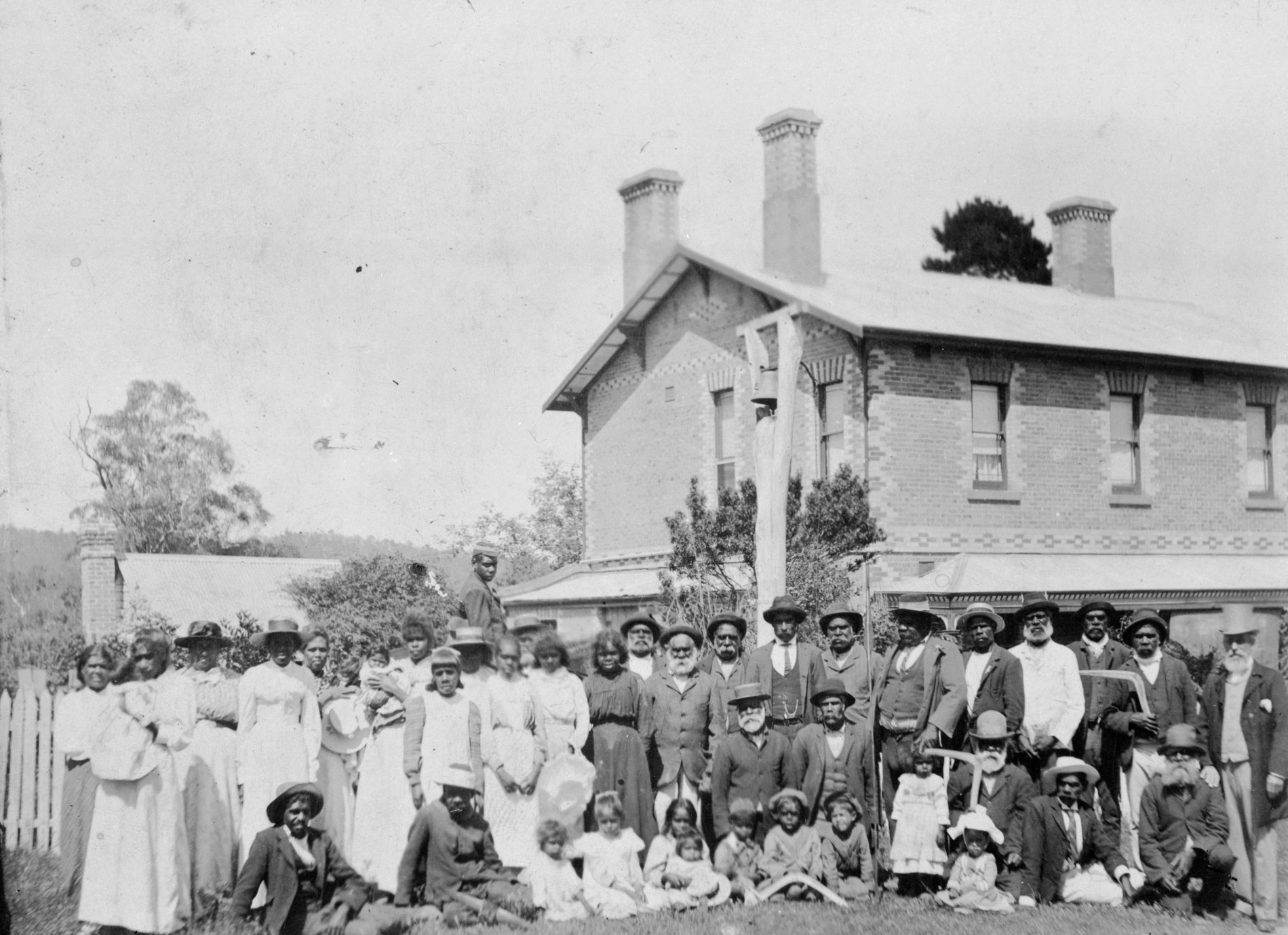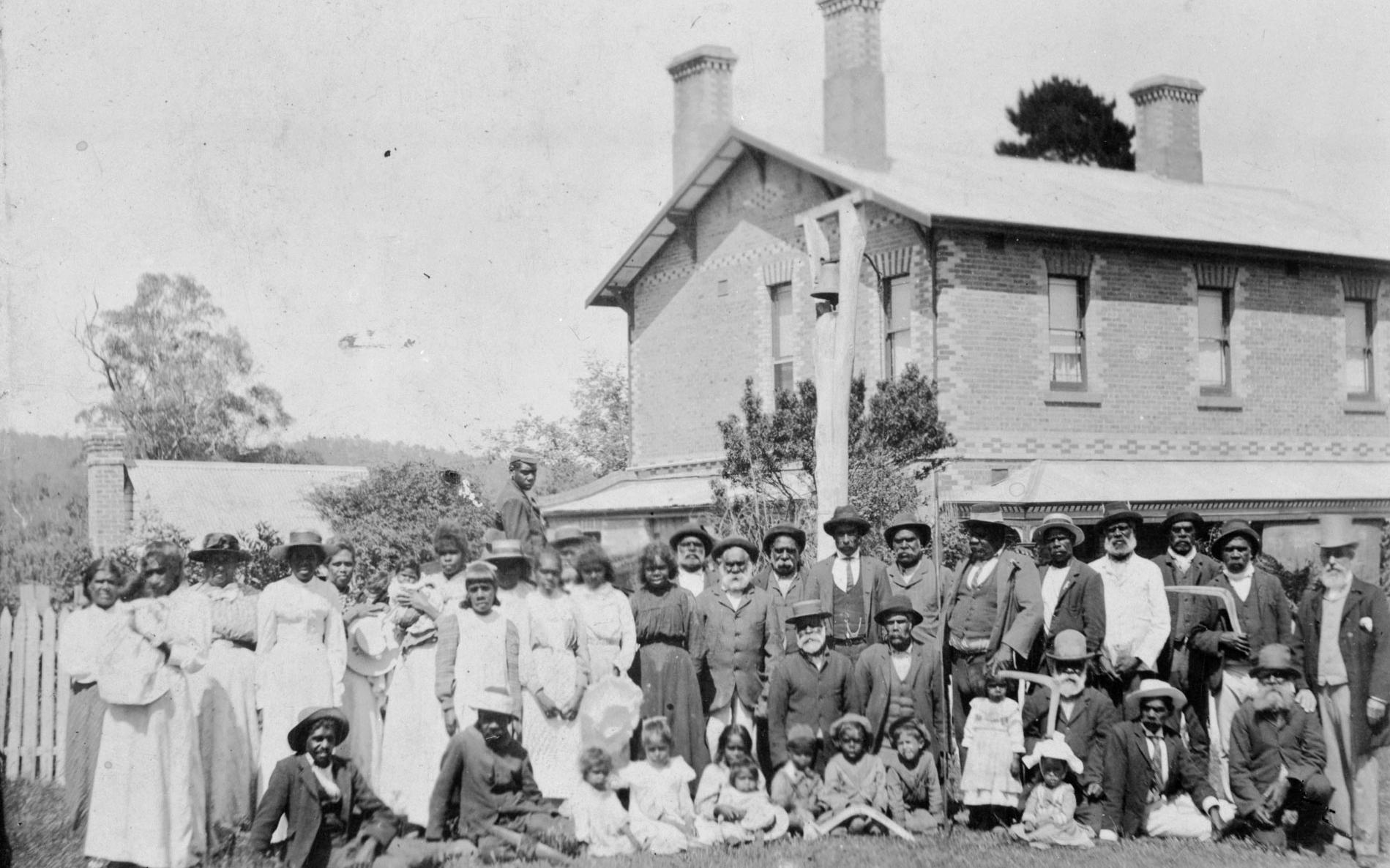Learning module:
The Spiritstone Saga
The Spiritstone Saga
16. Massacre at the creek
1838: Myall Creek massacre
| WARNING: This page contains some difficult and potentially distressing content |

The rumours about the massacre of Aboriginal people are widespread. Are some settlers finally going to be held to account for murder?
You manage to sneak your way into the courthouse in Sydney. The place is packed. People from all walks of life want to watch this court case. A shocking case. At least 28 murdered Aboriginal people. It is also surprising that white settlers are being taken to court for it. They often just get away with it. From what you hear, by the 1830s the killing of Aboriginal people is almost accepted by many colonists. Of course, it was officially illegal, and could result in the death penalty, but the white police force did not worry about such matters. Only a small number of murders of Aboriginal people were even recorded. We may never know the full number.
The court case begins. A group of mostly older and young Aboriginal Wirrayaraay people were camping on a settler's farm, working for him. Relations were friendly. Then a group of convicts and a different settler came on to the property. They kidnapped and killed many of the Aboriginal people, mostly older people and young children. 28 burnt bodies were found, but there may have been more. The trial ends, and the men are found not guilty. A huge gasp goes up from the people watching. The judge is not happy with how the case went so he calls for a second trial.
In the days between trials, as you wander around Sydney, you hear that the judge is finding it hard to find people to be on the jury. Not many people want to be the ones to send settlers to their deaths, even if they did murder people.
It is a cold, rainy day when the second trial starts. Again, you manage to get into the public gallery to watch this sensational court case be decided. As the case continues, it seems that some of the settlers will be found guilty. But at the end of the trial one witness refuses to talk. Seven of the eleven men are found guilty. They are sentenced to death by hanging. The crowd begin shouting when the judgement is announced. Some very racist comments are being yelled out. From watching this court case, you start to understand how much racism there is in the Australian colonies at this time.
Afterwards, you reflect on what the case means. A local newspaper article quotes JH Bannatyne, who says it was an ‘extraordinary sensation in the Colony and will be the subject of gossip for many a long day yet.’ You also read that the person who reported the massacre lost his job and couldn’t get another one.
In the end, the outcome of the court case is that settler attitudes become even more negative towards Aboriginal people. In future, it just looks like killers will take better steps to cover their tracks.
The Spiritstone glows brightly. ‘We grow when we ask questions. I now ask you to ask some of your own…’
Your task
- Ask an ‘open-ended’ question about the Myall Creek massacre. An open-ended question is a question, usually starting with ‘why’ or ‘how’, which needs a long, detailed answer. An open-ended question often leads to asking even more questions.
- Then ask three follow up questions that you think of after asking your main open-ended question.
- For example, on the topic of Captain Cook’s landing in Australia:
- An open-ended question could be: Why did Captain Cook sail to Australia?
- Follow up questions could include: What was he looking for in Australia? How did he get on with the people who already lived there? What were the conditions on the boat like?
Open ended question:
Follow up question 1:
Follow up question 2:
Follow up question 3:









